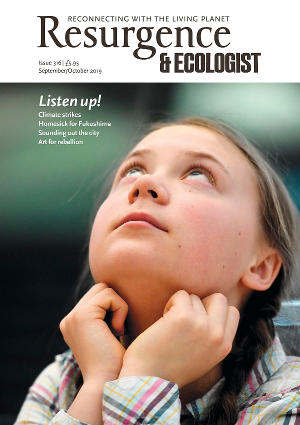I’ve always been interested in insects, in the small detail of the lives going on around ours, but a whole book on them… Surely it wouldn’t keep my attention! How brilliant to be proved totally wrong with the joyous romp that is Anne Sverdrup-Thygeson’s Extraordinary Insects.
Sverdrup-Thygeson is a professor at the Norwegian University of Life Sciences and a scientific adviser for the Norwegian Institute for Nature Research. She brings a wealth of knowledge to uncover the secret world of insects and explains how much they do for us, giving us food and looking after ecosystems as well as presenting potential solutions to our crises – from antibiotic resistance and carbon storage to the digestion of plastic.
Despite the carefully researched and detailed academic insights, her strong authorial voice means this is a far cry from reading a scientific journal. She immediately smashes the glass of the museum case of dry, dead insects and instead gives us a riotous party of colour, noise and humour, from the scatological to the sublime. Did you know that the male of one species of swallowtail butterfly has eyes on his penis to assist with correct mating positioning, or that two fruit flies reproducing in ideal conditions with no predators would multiply to a septillion fruit flies in just one year? (That’s 1 followed by 42 zeros.)
I loved discovering that in search of minerals, insects will drink crocodile tears: “Biologists on a trip downriver in the jungles of Costa Rica were able to film and photograph a beautiful orange butterfly and bee drinking the tears of a caiman – a member of the crocodile family – each sipping from one of its eyes.”
I laughed out loud at various points, such as learning that the male water boatman serenades females using his abdomen as a string and his penis as a bow. This was followed by the deadpan statement, “Perhaps the water boatman will turn out not to be the world’s noisiest insect after all. But the fact that it fiddles with its own penis – well, you can’t take that away from it.”
I quoted amazing facts to my family. I marvelled at the smorgasbord of relevance – particularly the way the author relates so many details back to our human world, taking us from Beyoncé to Darwin and from Ibsen’s Nora to the dementors in Harry Potter.
Recent headlines have warned of ‘Insectageddon’, following a study published in the journal Biological Conservation in April 2019. The researchers found that the biodiversity of insects is threatened on a worldwide scale. Declines are already dramatic, and if they continue at the same rate they may lead to the extinction of 40% of the world’s insect species over the next few decades.
Cute bees have managed the transition to popular concern, but our reliance on insects goes far, far beyond this one (wonderful) pollinator. We need a wake-up call. We need insects to be relevant to us all – not just a nuisance. And the way to do it? Well, this book is the best possible start – we can borrow from its charisma, fun, drama, detail and humour to spread the word about how insects enrich and support our lives.







